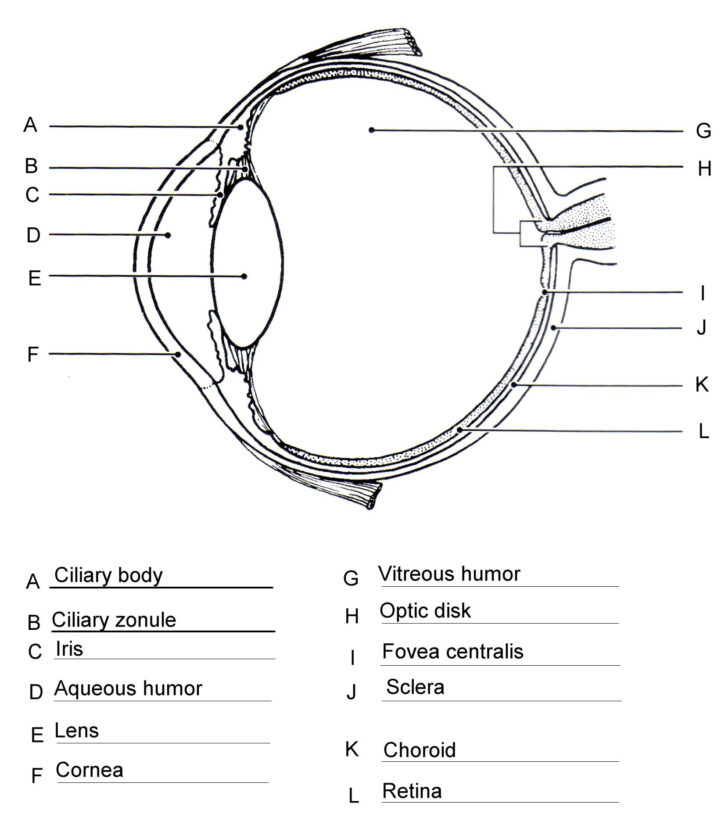Understanding the anatomy of the eye is crucial for anyone studying biology or optometry. The eye is a complex organ that allows us to see the world around us. It is made up of several parts, including the cornea, iris, pupil, lens, retina, and optic nerve. Each part plays a vital role in the process of vision.
One key aspect of the eye’s structure is the cornea, which is the clear, outermost layer that covers the front of the eye. The cornea helps to focus light onto the retina, which is located at the back of the eye. The retina contains photoreceptor cells called rods and cones, which convert light into electrical signals that are sent to the brain via the optic nerve.
Anatomy Of The Eye Worksheet Answers
Functions of the Eye
The eye has several important functions that allow us to see clearly. The iris is the colored part of the eye that controls the size of the pupil, which is the black hole in the center of the iris. The pupil dilates in low light conditions to allow more light to enter the eye, and constricts in bright light to reduce the amount of light that enters.
The lens of the eye is responsible for focusing light onto the retina. It changes shape to adjust the focal length, allowing us to see objects at different distances. The optic nerve carries the electrical signals from the retina to the brain, where they are processed and interpreted as images.
Conclusion
Understanding the anatomy of the eye is essential for anyone studying vision or eye health. By knowing the structure and functions of the eye, we can better appreciate the complexity of this remarkable organ and the processes that allow us to see the world around us.
